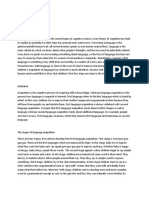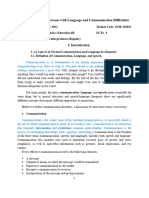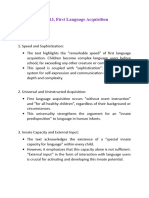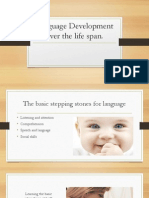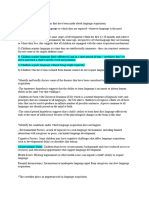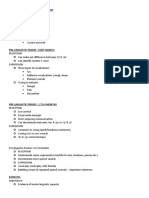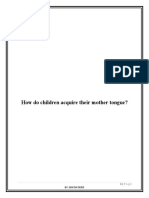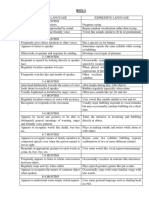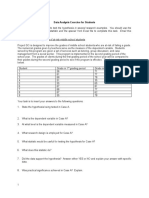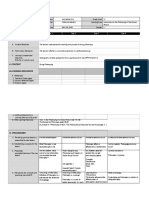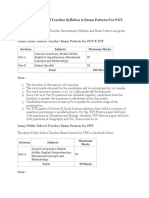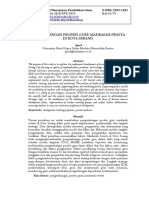0% found this document useful (0 votes)
80 views28 pagesDevelopment of Language
The document discusses the stages of language development from birth through adolescence. It outlines 6 stages from pre-talking to later multi-word stages that occur from birth to 30 months as children progress from babbling to single words and simple sentences. Key milestones at different age ranges from 0-3 months, 3-6 months, 6-9 months, and 9-12 months are also summarized. School-age language abilities from ages 5-10 are covered.
Uploaded by
ayesha badarCopyright
© © All Rights Reserved
We take content rights seriously. If you suspect this is your content, claim it here.
Available Formats
Download as PPTX, PDF, TXT or read online on Scribd
0% found this document useful (0 votes)
80 views28 pagesDevelopment of Language
The document discusses the stages of language development from birth through adolescence. It outlines 6 stages from pre-talking to later multi-word stages that occur from birth to 30 months as children progress from babbling to single words and simple sentences. Key milestones at different age ranges from 0-3 months, 3-6 months, 6-9 months, and 9-12 months are also summarized. School-age language abilities from ages 5-10 are covered.
Uploaded by
ayesha badarCopyright
© © All Rights Reserved
We take content rights seriously. If you suspect this is your content, claim it here.
Available Formats
Download as PPTX, PDF, TXT or read online on Scribd
/ 28



